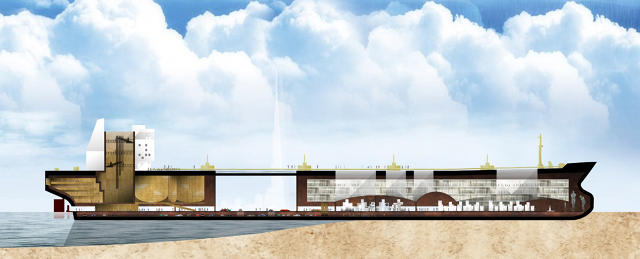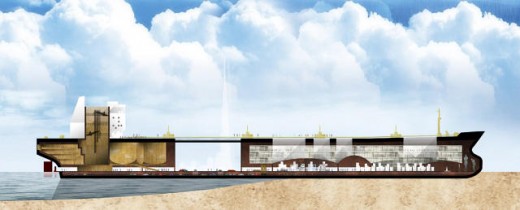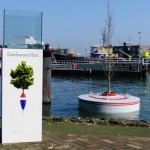These beautiful Floating Villages Are made out of outdated Oil Tankers
Inspiring the arena toward a future without oil.
may 19, 2015
In a future world with out oil, we would prove with thousands of unusable huge oil tankers, some as long as 40-story structures. instead of sending them to scrapyards, a workforce of architects needs to show them into floating neighborhoods.
the availability of ships isn’t hypothetical: once a year, as previous tankers wear out, they’re already being scrapped. Most turn out in shipyards in places like India and Bangladesh, where employees are paid a couple of rupees a day to assault steel hulls with blowtorches. it can be unhealthy—tons of of workers have died from falling steel or explosions over the past decade in India on my own—and the ships themselves are thought to be poisonous waste. but by giving the hulls new value in development, the architects hope to alter the disposal course of.

Their target market is the center East, the place builders are already pouring cash into tasks like artificial islands in Dubai and new skyscrapers for Abu Dhabi and attempting to create newly iconic designs. however what could be more iconic than reusing exact oil infrastructure?
“Wealth, power and cultural enlightenment has come to this area as a result of its oil history,” says Dutch clothier Chris Collaris, who created the conceptual design for The Black Gold with Ruben Esser, Sander Bakker, and Patrick van der Gronde. “however that oil historical past—or current status—can only be viewed on giant seas and large harbors. Why now not truly embed it visible in your constructed tradition and society? it can be so powerful and breathtaking to have this mega structure at a long beach working as an actual useful building.”
After carving out the interior construction of a megatanker, the designers propose turning it into an ethereal public house for events, a museum, shops, and even housing, with a park-like house on the top deck. At over 1,300 ft lengthy, some tankers might simply accommodate an entire neighborhood.

It would not be a very easy conversion to make—cleansing poisonous waste off tankers can cost as much as $1 million in current recycling processes, depending on the scale of the ship. “The dismantling and cleansing of elements for you to no longer used in the ship anymore could be the biggest section all over building,” says Collaris.
however that’s a course of that must occur anyway to recycle the steel, and the designers argue that reuse is a more sustainable choice. “A re-used tanker will also be practical once more for every other 50 or extra years,” Collaris says. “It is not going to go on the big tough seas. And why now not keep close to the primary initial objective or structure where the steel has been used for in the first place. Recycling by way of reuse in the same object is far more environmentally friendly than recycling the metal for brand new constructions.”
Most of all, they see it as a symbol for the shift within the center East. In 2000, the former oil minister of Saudi Arabia anticipated the coming end of the age of oil:
Thirty years from now there shall be a huge quantity of oil—and no buyers. Oil might be left in the ground. The Stone Age came to an finish, now not as a result of we had a lack of stones, and the oil age will come to an end now not because we’ve got a scarcity of oil.
As climate alternate becomes extra pressing, it can be possible to think about that occuring, and the redesigned tankers can level to that possibility.
“we think it is interesting to reuse the mega oil tanker as an icon for the longer term, relating to a time with out oil,” says Collaris. “handiest by means of utterly altering its operate and place this can be a exceptionally excellent structure to deal with and accommodate new pursuits of the Arab states.”
[All Images: courtesy of Chris Collaris, Ruben Esser, Sander Bakker and Patrick van der Gronde]
(190)











